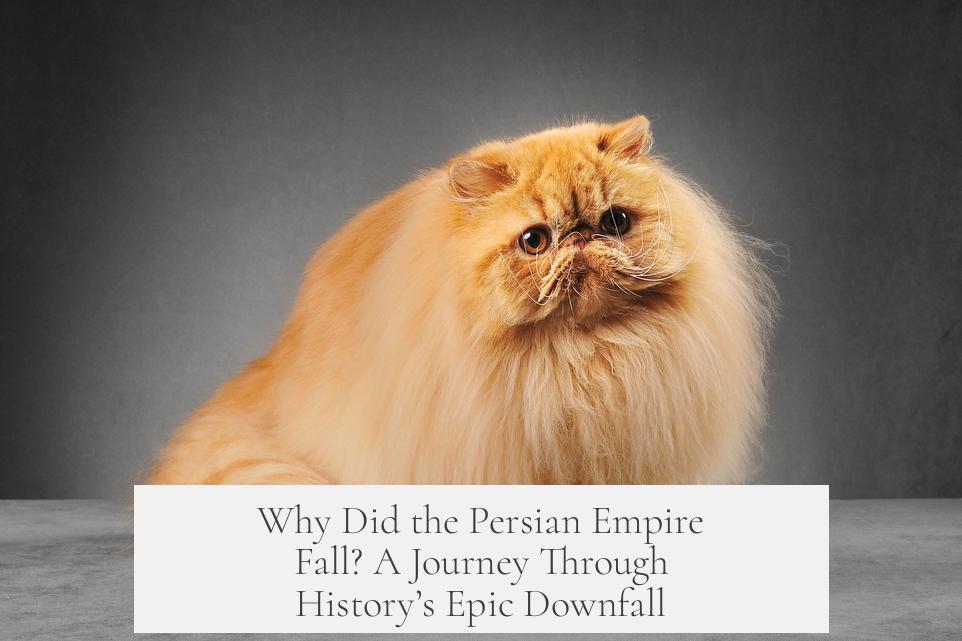The Persian Empire fell primarily due to the invasion and conquest by the Islamic Rashidun Caliphate. However, multiple underlying causes contributed to its vulnerability. These include the exhaustion from extended wars with the Byzantine Empire, internal political instability, and the subsequent military defeats by Arab-Muslim forces. Together, these factors led to the collapse of the empire and the dissolution of central Sassanid authority.
The Sassanid Persian Empire suffered a prolonged conflict with the Byzantine Empire from 602 to 628 CE. This war drained its military and economic resources significantly. The Persian ruler Khusrow II expanded aggressively, capturing Egypt and other territories. But this territorial success stretched the Persian army and treasury to their limits.
During this time, the Byzantines forged alliances with steppe tribes near the Sassanid northern border. They managed to push Persian forces back to their original borders and even advanced towards Ctesiphon, the Sassanid capital. Byzantine raids damaged wealthy Persian territories and royal compounds, further weakening the empire’s economic base.
To maintain its defenses and fund military campaigns, the Persian government imposed heavy taxes, one of the heaviest in its history. This economic strain likely increased dissatisfaction among citizens and nobility and further destabilized the empire.
Political instability compounded these problems. Khosrow II received the blame for the empire’s failures and was overthrown and executed by his son, Khavadh II. Khavadh negotiated peace with the Byzantine Empire, ending the long-lasting war. However, this peace was short-lived because Khavadh died only months later.
The death of Khavadh II plunged the empire into civil war and a succession crisis. Multiple coups occurred, and it was not until 632 CE that a weak ruler, Yazdagerd III, ascended the throne. He was only a young boy, effectively controlled by nobles and court officials.
This power vacuum led to fragmentation. Provincial governors gained autonomy and pursued self-interested agendas, undermining centralized imperial authority. The nobles exploited the dynastic situation for immediate personal gain, neglecting unity and military coordination, which was critical given the looming external threat.
Amid this disunity, the Arab-Muslim raids began. Initial attacks in 634 CE penetrated deep into Persian Mesopotamia. Despite temporarily repelling these raids, the Sassanids could not sustain their defense efforts.
In 637 CE, Caliph Umar led a new Arab army that decisively defeated Persian forces and captured Ctesiphon. Yazdagerd III fled eastward, signaling the collapse of central power. A final attempt by provincial governors to resist Arab forces failed the following year. This defeat shattered any remaining centralized control over the empire.
Following this, Yazdagerd III and leading nobles retreated to the eastern province of Khorasan. According to later traditions, the king was assassinated by a peasant, effectively ending the Sassanid royal line. Nobles who fled northward established minor local dynasties in Central Asia. These successor states played a role in spreading Persian culture to the wider region but were relatively weak and fragmented.
| Cause | Details |
|---|---|
| Prolonged Byzantine Wars (602-628 CE) | Drained military/economic resources; territorial overextension; heavy taxation |
| Political Instability | Overthrow of Khosrow II; succession crises; weak ruler Yazdagerd III; nobles’ self-interest |
| Arab-Muslim Invasions | Initial raids in 634 CE; decisive defeat in 637 CE; capture of Ctesiphon; loss of central authority |
| Dissolution | Assassination of Yazdagerd III; local dynasties in Central Asia formed; end of unified Persian Empire |
- The Persian Empire fell primarily due to conquest by the Islamic Rashidun Caliphate.
- Long wars with Byzantium exhausted resources and strained the empire economically and militarily.
- Political chaos and weak leadership destabilized central authority.
- The decisive Arab victory at Ctesiphon marked the fall of Sassanid power.
- After the empire’s collapse, Persian culture spread through fragmented successor states in Central Asia.
Why Did the Persian Empire Fall? A Journey Through History’s Epic Downfall

The Persian Empire fell primarily because it was invaded and conquered by the Islamic Rashidun Caliphate. But hold on! The story isn’t as simple as that one-liner suggests. Like any great empire’s farewell, the collapse of the Persian Empire, especially the Sassanid dynasty, involved a cocktail of wars, politics, and cultural shifts. So buckle up as we dissect why this once-great empire crumbled into history.
The Sassanid Persian Empire, at its peak, wasn’t a pushover. It occupied a vast area from the Middle East deep into Central Asia. But by the early 7th century CE, dark clouds hovered on the horizon.
Prolonged Wars With the Byzantine Empire: When Rivals Wear Each Other Out
Imagine a grueling boxing match spanning over two decades. From 602 to 628 CE, the Persians and the Byzantines threw punches back and forth in a drawn-out conflict. This war didn’t just drain energy; it drained the empire’s resources dramatically.
At one point, Persian Shahanshah Khusrow II managed to push westward as far as Egypt. Sounds impressive, right? Sure. But with great territory comes great logistical headaches. Stretching their armies and treasury to the limit, the Persians found themselves increasingly overextended. Those hard-won lands needed defending and administering, and that strained the empire beyond relief.
The Byzantines didn’t just take this lying down. They rallied, formed alliances with pesky steppe tribes on the Persian northern border, and began pushing the Persians back. Eventually, they reclaimed lost territories and didn’t stop there—they nearly laid siege to Ctesiphon, the Persian capital itself. Ouch.
As if war destruction wasn’t enough, King Khusrow II had to foot the bill. He imposed some of the heaviest taxes in Sassanid history to keep his defenses strong. Imagine being a taxpayer then—your wallet probably felt as bruised as the empire itself.
Political Instability: When the King’s Head Is on the Chopping Block
War is tough, but the internal mess can be even tougher. The Sassanid empire soon saw the overthrow and execution of Khusrow II, as blame rained down on his shoulders for the empire’s troubles. His son, Khavadh II, took over but died shortly after making peace with the Byzantines. Talk about bad timing.
This opened a Pandora’s box of chaos. The realm plunged into civil war and succession crises. From 628 to 632 CE, kings came and went faster than a social media trend. The throne remained empty or weak during crucial moments.
Enter Yazdagerd III, a mere 8-year-old boy crowned king in this turbulent period. Not exactly the armoured hero the empire needed. Real power rested in the hands of nobles and courtiers more interested in personal gain than unity. As they jockeyed for position, provincial leaders acted like independent princes, chipping away at centralized power. This fragmentation played right into the hands of external enemies.
Arab-Muslim Invasions: The Final Blow?

The timing of Yazdagerd’s reign was unfortunate. In 634 CE, the emerging Islamic Rashidun Caliphate started their lightning raids into Sassanid territory. Initially, the Persians repelled these Arab invaders, showing the empire wasn’t completely out of gas yet.
But the tide turned swiftly. In 637 CE, Caliph Umar led a new Arab army that decisively defeated the Persians and captured Ctesiphon. Yazdagerd III, just a teenager, fled eastward. The remaining provincial governors made a last-ditch stand but were crushed by a smaller, more motivated Arab force. Central authority dissolved like sand through fingers. The Sassanid Empire was officially on its last legs.
Aftermath: The End of an Era and New Beginnings
Yazdagerd’s flight ended with his assassination, reportedly by a peasant—symbolic of how far the mighty had fallen. The nobles who escaped fled to Central Asia, setting up minor local dynasties. While these successor states kept Persian culture alive and laid groundwork for future kingdoms, they lacked the strength and unity of the great Sassanid Empire.
So, did the Persian Empire fall because of the Arab conquest? Yes, but it fell because it was already shattered by decades of exhausting wars, political chaos, economic strain, and weak leadership. The Arabs delivered the knockout punch, but the empire was bleeding long before.
Lessons From the Persian Fall
- Overextension burns out resources: Expanding your borders can be great, until managing and defending those territories crushes your treasury and army.
- Internal unity matters: Civil wars and selfish nobles can cripple empires faster than external enemies.
- Adapt or perish: New forces on the scene, like the Islamic Caliphate, can change the game quickly when your state is vulnerable.
Curious how other empires handled similar threats? The Roman Empire faced barbarians; the Mongols swept through Eurasia. The Persian story reminds us power is not forever. It requires constant vigilance, smart leadership, and sometimes, a little luck.
So next time you think of empire fall, remember the Persians—not just the conquest by Arab forces, but also the long saga of military strain, political turmoil, and economic hardship that set the stage for history’s grand exit.



